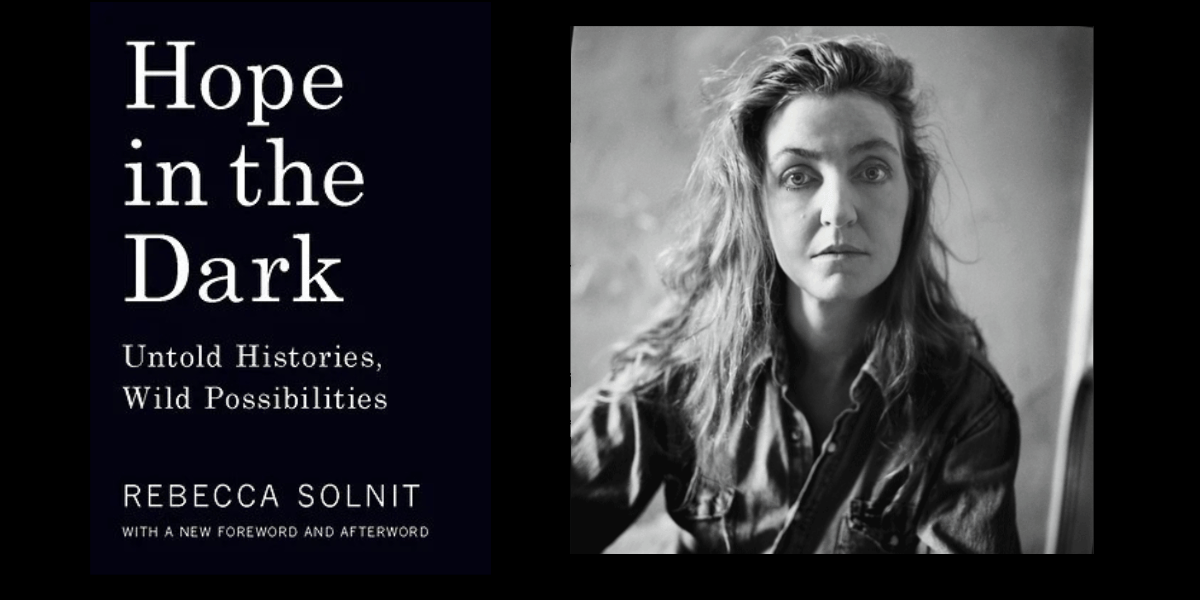Rebecca Solnit on How to Hope in the Dark
For many, we're in a moment right now that feels crushing.
A moment where the future feels so dark that it's almost easier not to think about it.
Until the Saturday preceding the election, I did not think Kamala would win. Whether I finally allowed myself to hope or bought into what the political polls were selling, I don’t know. What’s true is I didn’t believe, and then I did.
Now, following the results, I’m struggling with a mix of fear, incredulity, and frustration. It's easy to feel that everything I believe in—change, empathy, progress—is slipping away.
I know I’m not alone in feeling the weight of it all, and neither are you.
One voice I turn to in times of absolute despair is the author, cultural critic, and hope-tivist, Rebecca Solnit.
Known for works like Men Explain Things to Me (whose main essay launched the word “mansplaining” into the zeitgeist), Solnit published a book in 2004 called Hope in the Dark. In it, she presents a bold argument for hope, not as wishful thinking, but as a radical commitment to keep acting, even in a world whose future is hazy and unpredictable.
The book, updated in 2016, holds up, proving that hope is eternal. Solnit offers an antidote to the despair that often grips those striving for change, especially when their focus lands more on losses than hard-won victories or the unimaginable progress.
Drawing from decades of activism and deep engagement with environmental, cultural, and political history, she reminds us of the overlooked legacy of transformative wins that those working for change have achieved. The positive impacts of our actions aren't always obvious, directly measurable, or immediate, and giving in to despair is often a sign of overconfidence about what's to come.
Solnit's book is about the kind of hope you have to fight for, even in the most discouraging times. Written after another era of political setbacks, it speaks to the depths of despair, showing how, historically, movements and individuals who kept going—even when they couldn't see the path ahead—could make change in ways they never anticipated.
Her hope isn’t rooted in certainty or guarantees—what is? It's rooted in a commitment to keep acting, pushing, and caring—even when the outcomes feel foggy, distant, or impossible to imagine.
To read how Solnit views hope and how we might access it, upgrade and read the rest of this piece.
Join How to Live
For people who live in their heads, feel more than they show, and want a language for both.
Every Essay, Every Time.What you’ll receive as a subscriber::
- Every new essay, the moment it’s published
- Full access to the complete archive—150+ posts and counting
- Bonus pieces and experiments-in-progress, shared occasionally
- Invitations to seasonal, in-person gatherings
- A direct line to me (annual subscribers): personal replies and tailored recommendations
- 15% off all workshops and live events



